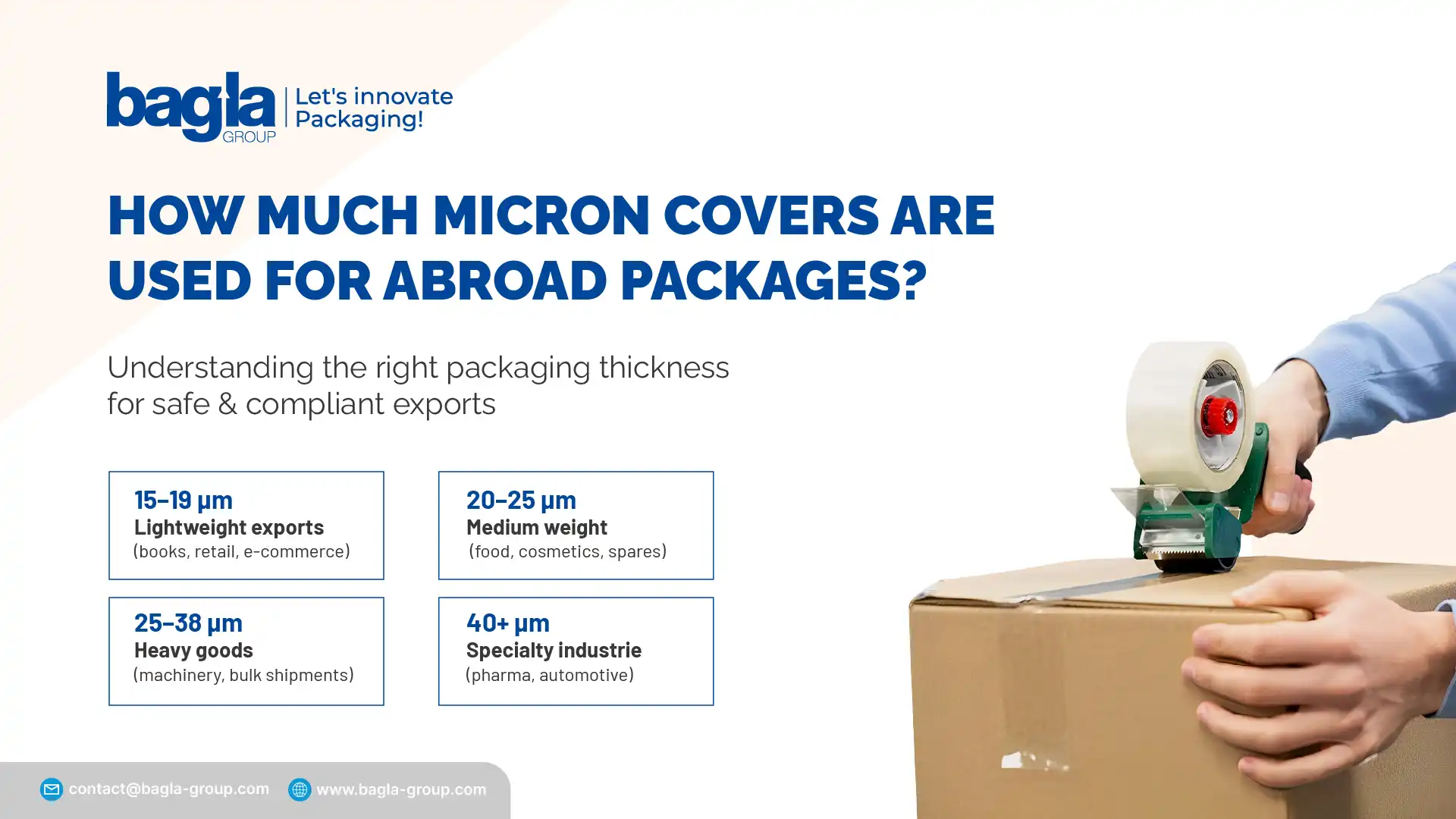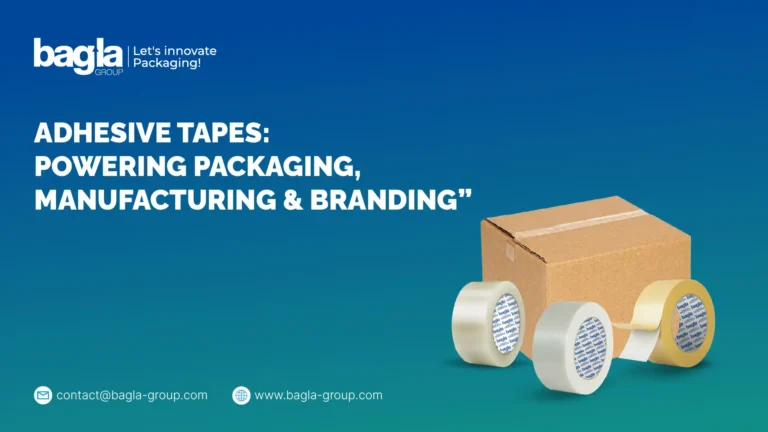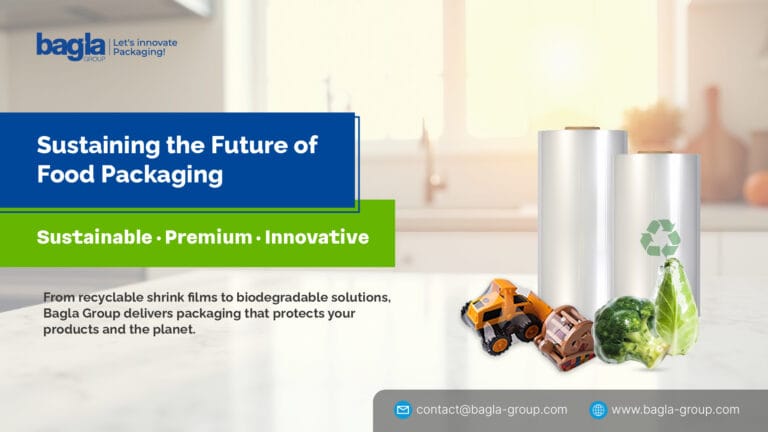In global export, packaging is more than just a protective covering; it is vital to the shipping of products correctly, economically, and legally. The main focus when it comes to export and packaging is the micron thickness of packaging films (sometimes called shrink films or covers). If you are a business that ships products internationally, especially to the United States, then knowing the right micron covers used for abroad packages is very important. This article explores how much micron cover is used for abroad packages to ensure durability, compliance, and safety in shipping. It will also include why Bagla Group, a worldwide leader in packaging solutions, is the reliable business to use for companies worldwide.
What Are Micron Covers in Packaging?
In packaging, a micron cover refers to the thickness of the protective film, or wrap thickness, measured in microns (µm), where 1 micron equals one thousandth of a millimeter. Micron thickness corresponds to the strength, durability, and flexibility of the film. Thinner films (15-19 microns) are used for lightweight retail or e-commerce goods, and packaging solutions that are 25-38 microns and above are for heavier and/or fragile product shipping overseas.
Choosing the right micron covers is important to ensure product protection, compliance with product standards, freight cost savings, and sustainable packaging – particularly with exporting into markets with regulatory compliance (like exporting to the USA).
Why Does Micron Thickness Matter for Export Packaging?
For shipping out of the country, especially to highly regulated countries such as the United States, the micron thickness is important for the given reasons:
- Product Safety: Thicker films generally give more puncture, tear, and transport damage resistance.
- Compliance with the international standards: Countries like the U.S. have rigid packaging standards that are designed to ensure safety, hygiene, and sustainability are met.
- Cost-Effective: packing to an appropriate micron thickness avoids over-packaging, which incurs extra freight costs, and under-packaging, which can cause product loss.
- Sustainability: advanced shrink films are designed to optimize the level of micron thickness that saves plastic while still being durable.
Standard Micron Covers Used for Abroad Packages
The following standards should be maintained while using micron covers for abroad packages:
- Lightweight Export Packaging (15-19 Micron): These covers are generally recommended for small, lightweight products such as electronics, books, and retail items. Commonly used in e-commerce exports to the US, where goods are exported in a bulk shipment with individual protective wraps
- Medium Weight Export Packaging (20-25 Micron): These packages are suitable for food, cosmetics, and industrial spare parts. This is specifically used to withstand all potential handling damage in both aircraft cargo and ocean shipping.
- Heavyweight Export Packaging (25-38 Micron): It is designed for bulk shipments, machinery parts, and heavier consumer goods and offers maximum resistance to tearing and wear and tear.
- Specialty or Custom Micron Thickness (40+ Micron): Usually found in specialized industries such as pharmaceuticals, automotive parts, or fragile electronics. For companies that transport high-value goods, we highly recommend custom solutions.
How the U.S. Market Regulates Packaging Microns?
When exporting to the United States, exporters must adhere to packaging requirements outlined by several organizations, including the following:
- FDA (Food and Drug Administration) – Certifies packaging for food and pharma purposes.
- ASTM International – Establishes packaging durability standards.
- Sustainable Packaging Coalition (SPC) – Sets expectations around sustainable packaging.
Micron thickness is individual to packaging strength, but it would also apply to safety and sustainability criteria, which can influence customs clearing and customer happiness.
Factors That Determine the Right Micron Thickness for Abroad Packages
- Product Weight & Fragility: Heavier and fragile products require higher micron covers.
- Mode of Transport: Air freight typically requires lighter packaging than sea freight. Sea freight requires a more robust cover since seamers typically are less gentle with boxes, and the moisture of sea freight demands higher microns than air freight.
- Export Destination Rules: The U.S has stricter food and medical product packaging rules.
- Climate Conditions: Products shipped to humid or hot climates may require thicker covers for moisture resistance.
- Sustainability Demands: Global buyers, especially in the U.S., now have more focus on sustainable packaging and microns that make environmental packaging “better.”
Why Choose Bagla Group For the Right Micron Packages?
Choosing Bagla Group for your micron packaging needs ensures you receive high-quality, reliable solutions tailored to meet international standards. With years of expertise in providing the perfect micron covers used for abroad packages, Bagla Group combines innovation, precision, and compliance to safeguard your products during export. Whether you’re looking for enhanced protection, superior durability, or packaging that aligns with regulatory guidelines, Bagla Group delivers excellence at every step.
Benefits of Using the Right Micron Covers For Exports
Using microns for abroad packages gives several benefits, such as:
- Less Damage in Transit: Correct micron thickness eliminates breakage, returns, and losses.
- Lower Freight Cost: Light films maximizing strength help companies save on air and sea freight.
- Increased Perceived Value: Enhanced quality packaging demonstrates professionalism and trustworthiness to international buyers.
- Sustainable Shipping: Correct micron levels achieve targets in the U.S. for reducing plastic waste.
- Meeting Global Standards ensures smooth customs clearance and delays in shipping
Conclusion
Choosing the right micron covers used for abroad packages is a strategic choice that can impact product safety, compliance, and brand image. For companies that export their products to the United States, it is important to understand the right micron level. As U.S. has the most stringent packaging regulations.
At the Bagla Group, we have a variety of packaging solutions that are strong, sustainable, and cost-effective for our customers to achieve international business success. Whether your business needs 15-micron films for lighter exports, or 38-micron heavy-duty covers for industrial goods, we have a solution to meet U.S and international standards.
What is the Most Common Micron Thickness for U.S. Exports?
The most common range is 20–25 microns, as it balances strength with cost-effectiveness.
Can Use the Wrong Micron Thickness Cause Export Issues?
Yes. Too thin, and products may get damaged; too thick, and you pay higher freight costs unnecessarily.
Are Micron Covers Eco-Friendly?
Yes, when made from modern POF shrink films that use less plastic while maintaining durability.
Which Industries Need Higher Micron Covers for Export?
Industries such as automotive, heavy machinery, and pharmaceuticals require thicker covers for compliance and safety.
Why Should Exporters Choose Bagla Group for Packaging?
Because Bagla Group offers globally compliant, U.S.-standard shrink films with customized micron thickness for different industries.



